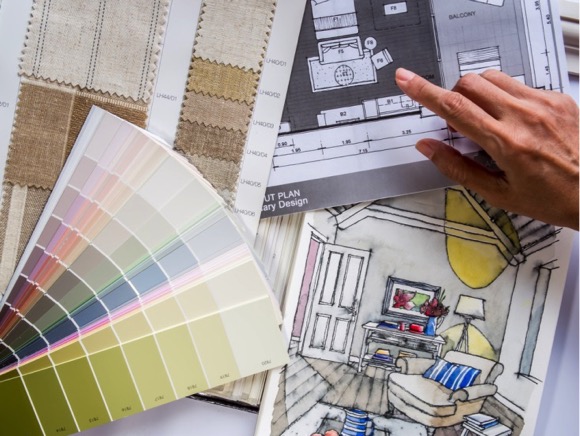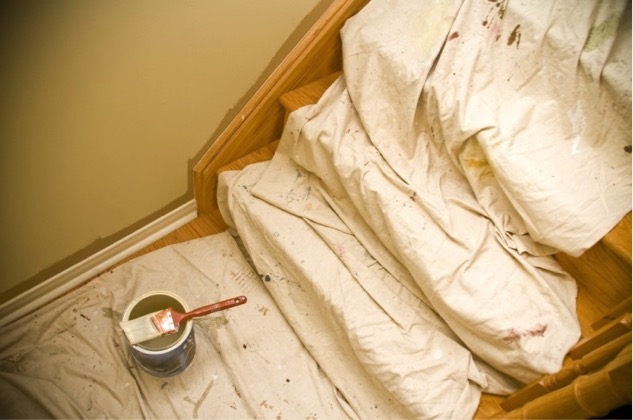Harmony is the essence of good design, but too many home designers have trouble striking unity. Often, it is too difficult to choose among different designs, so a house becomes a hodge-podge of competing colors and mismatched styles. The resulting mess is unattractive and unfulfilling, but most home designers don’t know what to do about it.
With a rainbow of colors and a world of designs, maintaining a consistent look throughout your house can seem daunting. However, once you start with these seven steps, you’ll find your house to be beautifully cohesive in no time.

Evaluate Your Fixed Colors
Unless you are gutting your home and starting from scratch, you will have a few colors in and around your home that you must integrate into your color plans. Most established colors in your home are likely to be mutable neutrals, but even neutrals have undertones that will mingle with your future palette. The easiest way to work with your fixed colors is to make a list and evaluate their undertones. Your list should include:
- Flooring. Replacing your floors can be expensive, and if your carpet, tile, or hardwood is in good shape, it is usually unnecessary. However, you must remember your floor’s color when you pick your palette.
- Cabinets. Woods come in all different hues, and you don’t want your warm walls to clash with your cool cabinets. If necessary, you can paint your cabinets too, but this shouldn’t be a first choice.
- Countertops. Counters are rarely anything but neutral, but the flecks in marble and granite can add a surprising amount of color.
- Landscaping. The current plants in your yard add to the existing exterior palette throughout the year, so you should factor in their foliage and blooms.
Consider Your Favorite Color Scheme
Instead of wasting time searching for color inspiration, you should start selecting colors based on feeling and preference. However, one color does not a palette make. While you are imagining your ideal home, you should consider what color scheme makes you most comfortable. Here are the three most popular and easy-to-use schemes based on the color wheel:
- Monochromatic. Use one hue (e.g. purple) in several shades, tones, and tints (e.g. eggplant, lilac, and violet).
- Analogous. Use three or four colors that are adjacent to one another on the color wheel (e.g. green, teal, and blue).
- Complementary. Use colors that directly oppose one another on the color wheel (e.g. blue and orange).
Decide on Your Neutral Colors
A house that is saturated in color is too bright and busy to endure, which means your palette absolutely must include at least a couple neutrals to provide balance and beauty. It is best to select a white and an additional dominant neutral to use in various locations around your house. These colors should reflect the undertones of your fixed colors to create unity.
Pick a Few Bold Colors
On the other hand, a house decorated in neutrals alone is boring and lifeless, so you will need some bold colors to make your style pop. You should choose two or three bold colors from the color wheel, depending on your chosen scheme. Still, you can choose exactly how bright and saturated your “bold” colors are; if you are uncomfortable experimenting with color, you can select paler hues.
Throw in an Accent Color
Finally, you need an accent color for dramatic flair. Your accent should align with your color scheme, but it should also pop out amidst the other colors around your home. Generally, lighter, brighter tints make better accents because they are easier to notice, even in small quantities.
Spread It Out
If you truly want cohesive design, the colors you have chosen should go everywhere in your home — even private spaces like bathrooms and bedrooms. You may feel limited with just five colors to work with, but in truth, any more colors would disrupt the design and make an inconsistent look. For the most chic results, your dominant neutral color should cover all wide, open spaces, such as hallways and exteriors. It may be more cost-effective to hire trustworthy painting professionals to properly paint any exteriors.
Then, you can use your bold colors in small quantities around your home. Bathrooms are excellent spaces for bright walls, and furniture makes for an excellent splash of accent. Still, you shouldn’t be afraid to expand your palette with shades and tints of your five colors, especially if you are unsure how to extend your five colors into every corner of the house.



